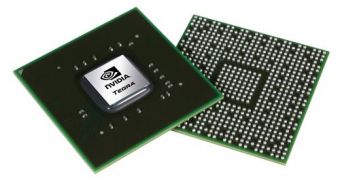NVIDIA's Tegra 2 SoC may be a mobile multimedia powerhouse, according to some standards at least, but even that particular platform isn't perfect, as it could definitely use some extra energy efficiency, something Wolfson claims to be able to grant.
As end-users know, the Tegra 2 SoC (system-on-chip) is one of, if not the most popular platform for tablets nowadays.
The platform is also meant for smartphones, but not many such mobile phones were released so far, no doubt because of the Tegra's power draw.
Simply put, while its processing and video rendering capabilities are undeniably high, it does not exactly give batteries an easy time.
Now, a report has arisen, saying that the Santa Clara, California-based company has enlisted the aid of Wolfson, a chip company from Edinburgh.
The company has a certain processor dubbed WM8325, which is said to be the highest-current monolithic power management IC in existence.
Basically, whatever device decides to integrate it into its system will benefit from a visibly longer battery life, according to the IC's inventor maker at least.
NVIDIA has supposedly decided to include the IC in its Tegra 2 mobile device reference designs, so as to counteract the consumption of its two cores.
For those that do not remember, the platform utilizes two ARM Cortex-A9 processing cores, as well as a GeForce graphics engine.
The Santa Clara, California-based company itself has yet to say anything official on this matter, but if the deal turns out genuine, one can safely (most likely) assume that the upcoming Tegra 2 will adopt the WM8325 as well.
What remains to be seen is when, if ever, tablets or smartphones featuring the chip arrive on the market. Either way, regardless of what happens, those that want to actually get more acquainted with the IC itself need only drop by this product page.

 14 DAY TRIAL //
14 DAY TRIAL //